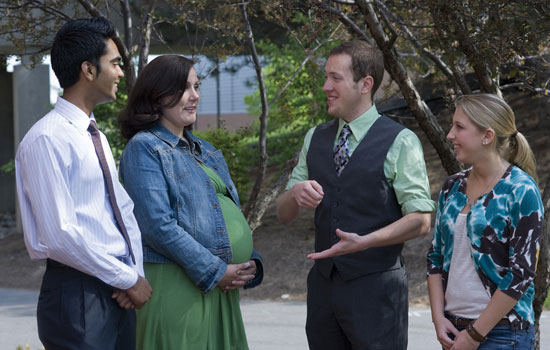Expert in Historic Embroideries to Keynote Textiles and Technology Forum
Techniques to reproduce historic threads find uses in medicine, communication
Ed Nute
Metal threads expert Tricia Wilson Nguyen will participate in “An Afternoon and Evening of Textiles and Technology at RIT,” showing her recent project, a replication of a 17th century English waistcoat made with authentic threads, beads, lace and sequins.
Tricia Wilson Nguyen, a materials scientist who specializes in metal threads for both historic embroideries and modern, engineered textiles, will open a series of programs called “An Afternoon and Evening of Textiles and Technology at RIT.” Her talk, “Metal Thread Embroidery,” takes place at 4:45 p.m. March 12 in the Center for Student Innovation at Rochester Institute of Technology.
Wilson Nguyen will discuss research and restoration of historical needlework and its connection to high-tech textiles. She will discuss a current project, the Plimoth Jacket, a recreation of the embroidered designs and threads of a 17 th century English waistcoat. The project team studied how threads and sequins were made and used in the past, and had them remade for the waistcoat.
Trained as a materials scientist and polymer physicist, Wilson Nguyen will also discuss how the threads and textile techniques of the past have influenced growth in the field of electronic textiles, her main area of engineering research. A portion of the lecture will be dedicated to how Fast Fourier Transform Analysis—a mathematical technique that can be used to convert images into data point patterns—has been applied to the motifs used on the jacket to provide information about the skill level of the different embroiderers.
“This is a chance to see how someone took a hobby they learned as a young child and turned it into a high-tech career,” says Carol Romanowski, assistant professor, RIT’s Center for Multidisciplinary Studies, co-host of the event. Romanowski, who also embroiders, had followed the course of the three-year replication project, documented on Wilson Nguyen’s Web site.
“This project has had a ripple effect across the country and now the ripple has hit RIT,” Romanowski says. The first unveiling of the restored waistcoat was done on Wilson Nguyen’s blog and on YouTube; RIT will one of the first sites of a lecture and museum tour about the project, says Romanowski, who added that the jacket exhibit formally opened March 9 at the Winterthur Museum in Delaware.
Wilson Nguyen is the principal in an engineering practice, Fabric Works, which has clients in the fields of high-performance clothing, medical devices and electronic textiles. She is also owner and partner in two companies, Thistle Threads and Tokens and Trifles; both focus on historical embroidery.
Her product development work for both commercial companies and the military has appeared at the Cooper-Hewitt National Design Museum in the 2005 exhibition, “Extreme Textiles.”
Additional programs will be presented the same day prior to Wilson Nguyen’s address. A wearable technology workshop takes place at 2-3 p.m. in the Center for Student Innovation. It will be lead by Michelle Harris, assistant professor, information technology, Golisano College of Computing and Information Science. The student organization, the MAKE Club, hosts Fibers Night at 6:30 p.m.
All events are free and open to the public. They are co-sponsored by the Center for Multidisciplinary Studies in RIT’s College of Applied Science and Technology as well as the Center for Student Innovation. For more information, contact Romanowski at 475-7258 or cjrcms@rit.edu.







